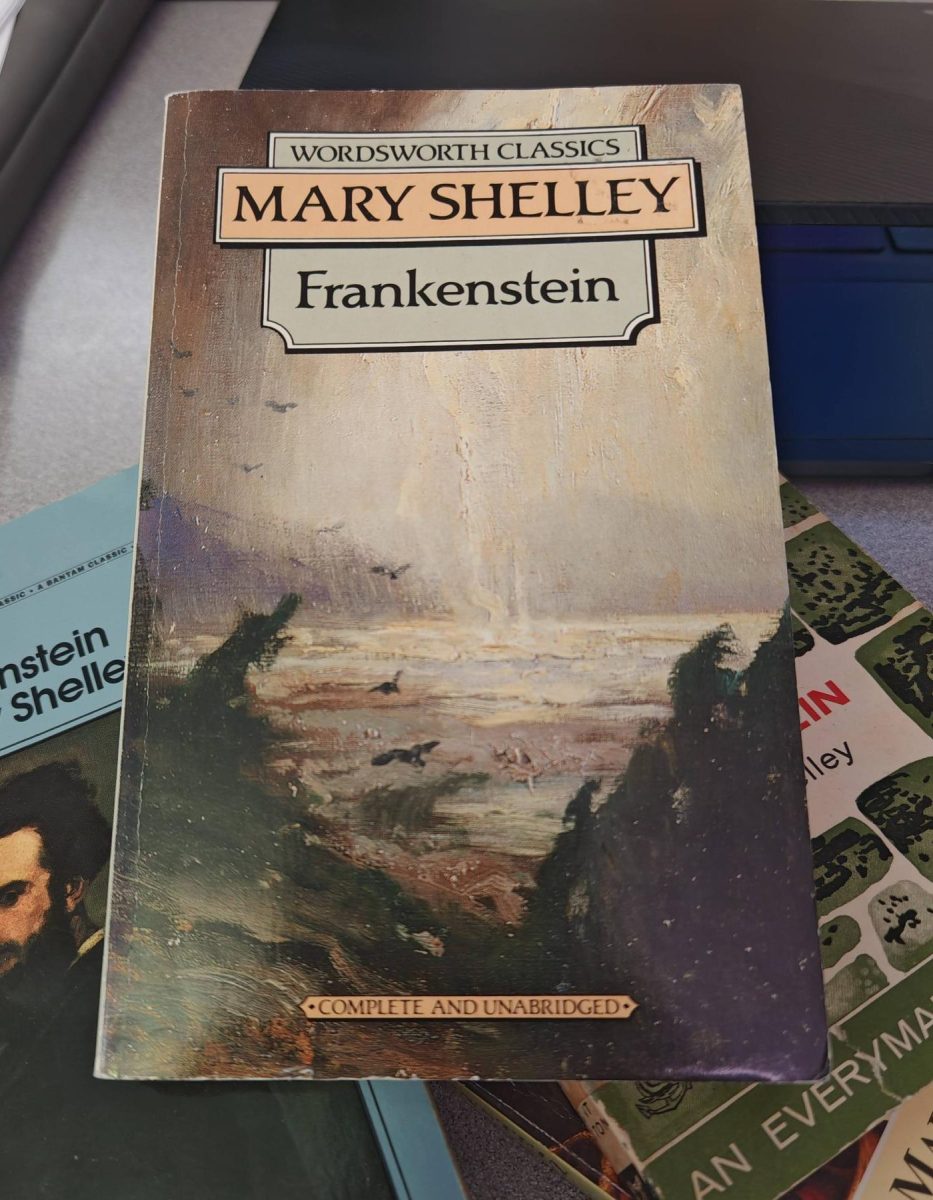CVHS students will do anything to put off the required reading. I should know — I spent four years of putting off assigned textbook passages until the nights before they were due. Textbooks are meant to be informational rather than entertaining, after all. But before you make a snap judgement for the mandatory class texts in AP English Literature, hear me out.
Put simply, I did not expect to enjoy “Frankenstein,” especially not as much as I did.
Written by Mary Shelley and published in 1818, “Frankenstein” was the choice text representing the Regency era in our AP English Literature class. Shelley started writing the story for a “ghost story” competition between friends during a dark and rainy summer caused by a volcanic eruption from the previous year. Blending these dark inspirations with ideas like galvanism (think using electricity to make frog legs twitch), the gothic novel is also considered a form of early science fiction.
The book, split into three volumes of similar length, centers on Victor Frankenstein as he recounts his tragic tale to Robert Walton, a captain on a voyage to the North Pole. Victor goes into excruciating detail, from childhood to his current predicament and everything in between, including the creation of the creature.
Starting in medias res, “Frankenstein” uses the epistolary format — a story told through letters — to tell the narrative out of linear order. This structural element is arguably the strongest aspect of Shelley’s work: by starting near the end, stakes are set as we already know Victor’s ultimate fate.
Within the main “Frankenstein’s creature” thread itself, however, the exposition about Victor’s background is a bit slow. But once Victor brings his creation to life, the story rapidly accelerates. One thing leads to the next as Victor’s actions cause runaway consequences for himself and those closest to him. By the end of volume one, I found myself trying to catch my breath with the breakneck pace of the plot.
The story slows down again in volume two as the creature tells his side of the story. As the creature navigates life from “birth” to a quiet cottage life to meeting Victor, Shelley again uses a non-linear narrative structure to connect the creature’s development back to Victor’s narrative. Then, everything comes crashing back in during the dramatic final volume of the book, where every storyline converges into one.
While some plot elements are resolved too quickly and conveniently earlier in the book, like how the creature suddenly finds a massive coat in his size in the middle of the forest, Shelley ultimately manages to stick the landing at the end. All the narrative threads are satisfyingly and neatly tied up, even those from the start of volume one.
It’s one of those story-within-a-story situations — like a nesting doll, new perspectives are always framed within another existing one. This format is what makes the book so compelling. Every time we go one layer deeper, we get to see how another character thinks. When we go up by one layer, we see the impact that the story has on the characters we know.
When all the different characters and stories are so masterfully developed on multiple levels, we begin to understand them. We humanize the characters, because their thoughts and emotions feel real — as absurd as it is to consider an eight-foot-tall creature and his thoughts “real.”
We can feel empathy for the creature after seeing all the pain and rejection that he has suffered, but we can likewise condemn him for his crimes as we witness the horrors that Victor’s family experiences.
By pulling out these juxtaposing feelings and emotions, Shelley is able to highlight the deeper questions involved in the story. The creature’s actions make us rethink our moral codes as we consider the debate on nature versus nurture. Frankenstein’s treatment of the creature brings up a discussion about our responsibilities when we act as creators.
Yes, as much as these topics may sound like a discussion post assignment for a literature class, they are also still important, pertinent questions as we continue to scrutinize our justice system or make scientific advancements. 200 years ago, the hot-button topic was galvanism; 30 years ago, it was cloning; and today, it’s AI.
And the writing itself still stands up, even by modern standards. Shelley’s word choice makes the writing relatively easy to understand, especially compared to Jane Austen’s “Pride and Prejudice.”
Besides the well-written plot, these Romantic descriptions of nature showcase Shelley’s mastery of the English language. The vivid imagery does the true scenes justice as Shelley effectively relays the positive impact that nature can have on us. In the midst of the chaotic, unbelievable details unfolding around Frankenstein, Shelley is able to pause everything for a timeless moment in nature.
Maybe that’s why Frankenstein has such great staying power. Strip away the countless adaptations and mass-produced Halloween decorations and you get a compelling story with universal themes that stand the test of time, all packaged in a well-written book.
So I implore you, read “Frankenstein” with an open mind. You might just be amazed by something you never saw coming.
“Frankenstein” is freely available via Project Gutenberg. Four stars out of four.









